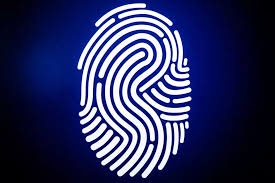Fingerprints are something like the barcode that identifies a person, that is, their format is unique to each individual. They are defined around the tenth week of gestation, and remain unchanged throughout life. In fact, if the skin on the fingertips is damaged, the finger print regenerates back to its original pattern. Below we will tell you how many types of fingerprints it is possible to find and other interesting peculiarities about these unique drawings present on our fingers.
Fingerprint or fingerprint?
Although it is true that in some countries, such as Mexico, fingerprint or fingerprint are used as synonyms, in general the meaning of these two concepts is very different. We will now rule out the concept of “digital footprint”, since it is related to the trail that we leave on the Internet when browsing, that is, the comments we make, the “likes”, the clicks on certain stores or blogs, etc. .
The dactylogram or fingerprint, on the other hand, is the unique pattern that allows one person to be identified among all the others. For this reason, the fingerprint reader, based on biometric techniques, is a secure and reliable access method both to access, for example, various mobile devices and private areas or environments that must be protected for different reasons.
What types of fingerprint can be recognized?
The fingerprint pattern can be classified into four types:
- Ribbon- This type of pattern shows lines that start on one side of the footprint, work their way up toward the center of the footprint, and then return to the end from which they started.
- Bow- This fingerprint format reveals lines that start on one side of the fingerprint, move toward the center, and end on the other side of the fingerprint. You can find, in turn:
- Simple arches: the ridges start on one side and run to the opposite side, rising slightly in the central area.
- Pyramid arches: the configurations that form the ridges are more elaborate than those of simple arches.
- Spiral- These patterns develop numerous concentric circles around the center of the footprint.
- Compound- It is a pattern that includes two different formations of the loop, with two separations, and two deltas.
The fingerprint analyzed from the field of biometrics
The fingerprint reader or detector is one of the most popular tools to log in to different devices, and its use has largely displaced access through alphanumeric passwords, common until not long ago. How does a fingerprint reader work?
Actually, the operation of the reader depends on the type of device in question, since not all are the same. Some models base their operation on light, others on electricity and there are even devices that work through sound. In addition, there are optical and ultrasonic technologies, capable of displaying the reader on a screen.
The capacitive reader is the most common in mobile phones, and what it does is use tiny amounts of electricity to be able to measure the distance of multiple points of the finger through the scanner. In this way, it can detect the differences that exist between one fingerprint and another, to represent them. Basically, it is capable of creating a model or pattern of that fingerprint, to store it on the device. Therefore, if any other person tries to access, the reader will not recognize the fingerprint. This reader offers a considerable level of security.
Although they are used less, there are also readers whose operation is based on the passage of light. It is an LED light capable of capturing a photograph of the fingerprint. Then, it compares it with another one that it has previously taken and, in this way, allows access or denies it.
To what extent is fingerprint recognition secure?
You can hear of some cases in which intruders have been able to access different services through a fingerprint model, although the current reality confirms that, thanks to the improvement of systems, these are high security methods.
As for mobile phones and whenever possible, the best option is to have two-step authentication. This system offers a double layer of security for our devices.
What is fingerprint biometrics?
Precisely, fingerprint biometrics is the technology that allows a person to be identified through the analysis of the characteristics of their fingerprint. It provides great utility, since the biometric data provided by the fingerprint is, in any case, unique, collectible and permanent. In fact, the information they capture can be compared with a previously established database, or contrasted with a defined record to, in this way, verify and guarantee the veracity of a person's identity.
Uses of fingerprint-based biometric validation
The use of a biometric system based on a fingerprint reader can bring benefits in different sectors, such as:
- Health: the fingerprint scanner in the field of health helps to prevent possible fraud by patients, or to avoid erroneous prescriptions. And, of course, it is very useful to protect patient privacy, since their health information is available only to authorized doctors or professionals.
- Financial services: fingerprint recognition is ideal for verifying the identity of a person in actions such as, for example, applying for a loan or carrying out any other transaction through the entity.
- Retail sector: a biometric system is very useful to control customer payments, increasing their security.
- Education: In this case, a biometric fingerprint reader is capable of allowing teachers to access student grades and, if authorized to do so, also the personal information of each student.
- Biometric signing: It is about registering the entry and exit of the employees of a company by recognizing their fingerprint. Through biometric signing, data protection is ensured, and it complies with Decree Law 8/2019, with the company being responsible for recording the working day and keeping this data.


No comments yet